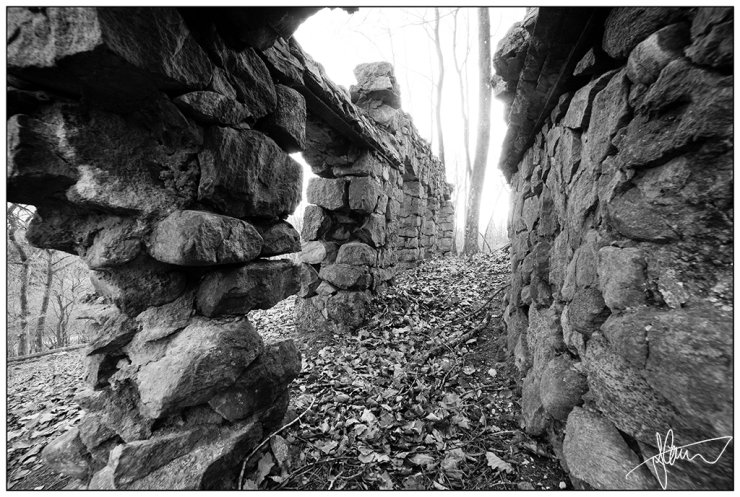This blog is about a lens that grew in me heart, I find myself using this more and more. The lens is the Samyang 14mm f/2.8, if you haven’t met it, then you have missed out on something as rare as true greatness on a budget.
 It started out with a lens I bought for wide field astrophotography, but it quickly turned out that this lens was perfect for panoramas as well. The build and glass is excellent and added to the fact that it is a very affordable lens it seems perfect to start out with for my “limited” astrophotography needs. And boy was I wrong, I mean not in buying the lens but with regards to the “limited” use.
It started out with a lens I bought for wide field astrophotography, but it quickly turned out that this lens was perfect for panoramas as well. The build and glass is excellent and added to the fact that it is a very affordable lens it seems perfect to start out with for my “limited” astrophotography needs. And boy was I wrong, I mean not in buying the lens but with regards to the “limited” use.
This is a manual focus, manual aperture, manual exposure lens that does not report any information, not even the aperture used to the camera. You might think “I cannot do without Autofocus”, but sure you can after all, what is autofocus worth in a dark night. What really matters is image sharpness and ease of setting infinity, and this lens is right on the money here.
Image Quality
My bet is that you cannot find an equally sharp lens at this wide angle to the price of this piece of glass. It gives really a good contrast and resolution. The lens is center sharp at f/2.8 while the corners can be a little soft on a full frame camera. The softness at the corners should not scare you away, while it is still acceptable sharp, and quite good quite good for a lens this wide. Shooting at daytime you want to be stepping down much further to increase the sharpness. At f/4 is the center bleeding sharp, and not surprisingly is this terrific at f/8.
Focal Length
14mm will yield approximately 116° angle of view. You might think 14mm that is not all that wide, but it is, do not get it confused with a fisheye lens. This lens offers one of the widest rectilinear focal length available. It is true that a wide-angle lens causes distortion making foreground subjects large in relation to background subjects. However, with modern programs like photoshop, this is easily countered. Admittedly this can be a challenge to work with, but with a little practice, it can be used to your advantage. Often I refrain from countering the effect, and try to work with the effect instead, it can give the viewer a sense of the presence in the images captured by it, or help bend old trees even further.

What is it good for
There is many areas of photography where this lens is applicable, this includes landscape, old forests, nightscape, astrophotography, aurora borealis and cityscapes etc. Perhaps my biggest use has been Astrophotography and LandScapes where it really shines. I would never use it for portrait photography as the distortion will give an unflattering expression to my subjects. Nor is it good for full-figured photography as very few would appreciate such a distorted look. Should I set a rule for when I would use this lens, then it would be for everything without a straight line, or another kind of reference in order to judge the distortion.
Aperture
This lens offers a blazing fast aperture of f/2.8. I use this with great benefit when shooting the night sky because the wide aperture permits me a shutter speed short enough to avoid getting star trails, and still use an acceptably noisy ISO setting. As I wrote earlier is this a full manual lens, this means that the aperture adjustment is done by turning the aperture ring. The click stops are in 1/2 stop increments and give off a noticeable “click” when turning the ring. This is worth an extra praise while the click aids accurately setting the aperture without the use of visual confirmation, something that is especially handy when shooting at night.

Downside
It should be no surprise that flairs can be an issue with this lens. Due to its angle and coating is this lens sensitive when shooting in the sun. The fixed lens hood is helping somewhat but not entirely. The lens hood also makes it ridiculously difficult to get a proper ND filter solution for this lens. This will surely be a minus for many landscape shooters. The front element is also bulging out, and I am constantly fearful of scratching it and the front glass element really easy pickup vapour when shooting in cold environments. The back cap is my opinion garbage and comes off too easily.
Calibrating the Samyang
Let me start out with saying that this is far from always necessary, my edition of the lens was right on the money when it comes to infinity focus. However, the focus ring seems to be off on some lenses. It has an easily adjustable focus ring that with a small tweak allows you the marking of infinity at the correct focus point. All you have to do is loosen a few screws, get in focus on an object far away (infinity, past hyperfocal distance), move the focus ring and then re-align the markings. This site and video explain it very well.
All in all
This lens goes with all my praise, the low price will not make your old lady raise an eyebrow. It will be a permanent addition to your photo bag.


Agree, of my 5 Samyangs it is the one I have used most of all 🙂
Seems there is a ND filter + holder for the 14mm
http://www.samyang-lens.co.uk/samyang-sfh-14-filter-holder.html
http://gippslandimages.com.au/haida-150mm-filter-holder-kit-for-the-samyang-xp-14mm-f2-4-lens/